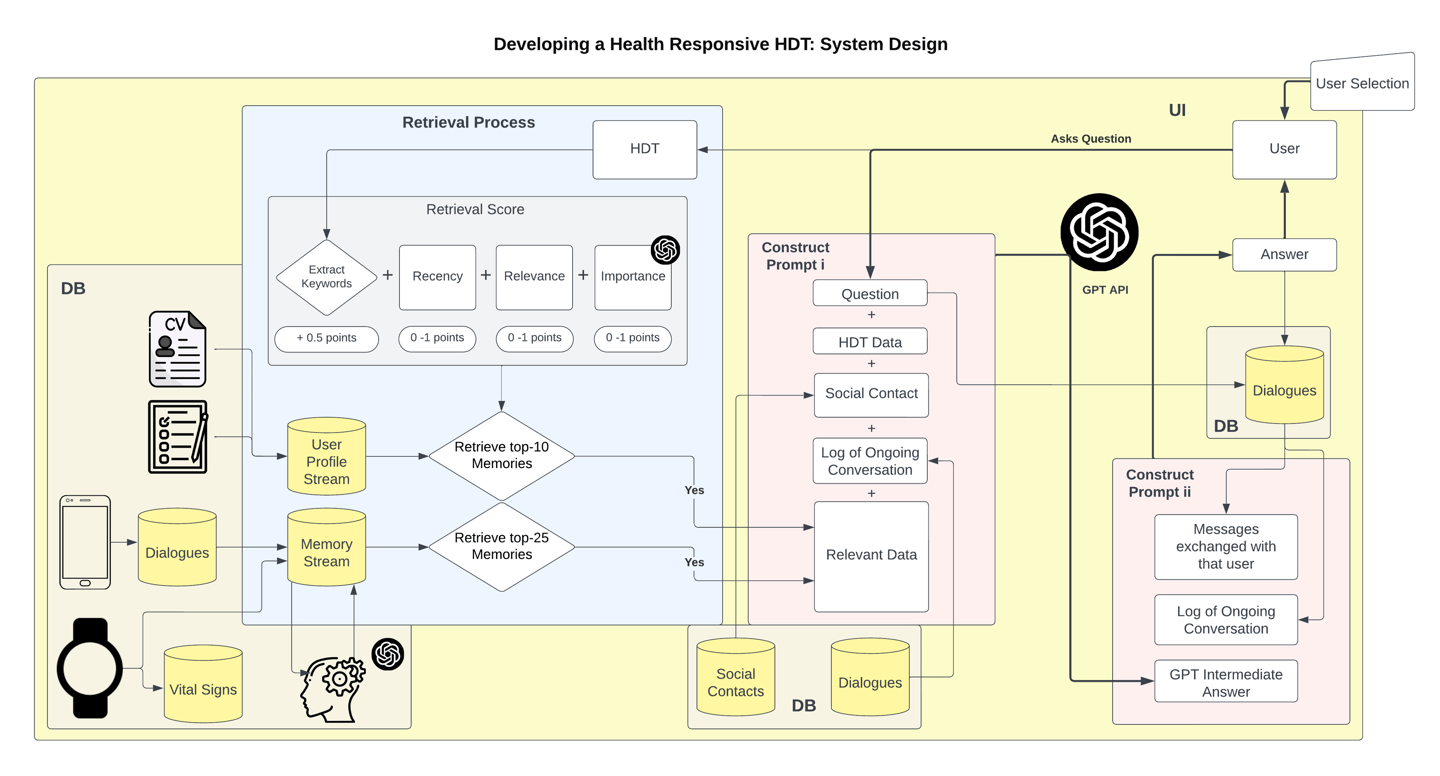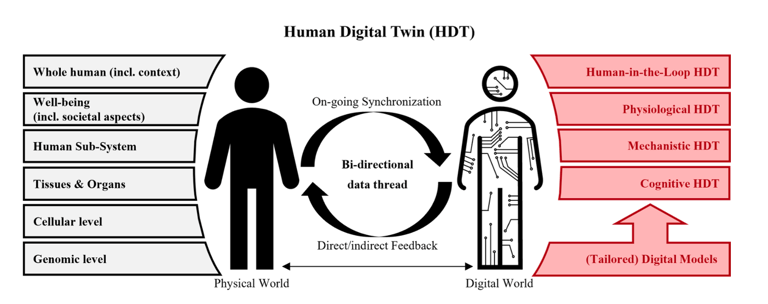

The Guiding Research Question
To what extent does integrating Human Digital Twin (HDT) data into Conversational Agents (CAs) that aim to represent specific individuals enhance the personalisation of feedback and conversational style?
Today's conversational AI is powerful, but it lacks a core human element: a memory that shapes its personality and empathy. My MSc Thesis, now a key part of our newly published paper, tackled this head-on. We engineered a novel architecture for a "Digital Me" that integrates neuroscience principles with LLMs.
Think of it as a skeleton for memory, allowing a digital twin to store, retrieve, and recall experiences to build a more authentic, evolving personality. This was a unique challenge where I combined my biomedical engineering background with Human-Centered AI to make it happen.
This isn't just about better chatbots. It’s about creating the foundation for:
🔹 Truly personalised health companions
🔹 More empathetic virtual assistants
🔹 A new era of digital identity


Inspired by the Brain,
Realised Through Technology
The Blueprint: Human Memory
A Human Digital Twin (HDT) is a sophisticated, dynamic digital representation of an individual, extending beyond traditional models to encompass complex physiological, behavioral, and cognitive aspects. By relying on continuous data collection and advanced modeling, HDTs offer predictive insights with vast potential in fields like personalized healthcare and smart environments. However, their development faces significant hurdles, including technical complexity and critical ethical challenges surrounding data privacy, security, and user trust.
Memory is the essential cognitive faculty that allows us to store and recall experiences and knowledge, forming the very foundation of our understanding. This process operates through distinct systems, from the temporary buffer of short-term working memory to the enduring archives of long-term memory, which house our personal life events (episodic), general knowledge (semantic), and unconscious skills (implicit). Brain structures like the hippocampus and neocortex are central to storage, while the amygdala adds critical emotional significance to our recollections. Crucially, memory retrieval is not a simple playback of stored data; it is a dynamic, reconstructive process. The past is actively rebuilt using our current knowledge and assumptions, meaning our memories are inherently fluid and can change over time.


